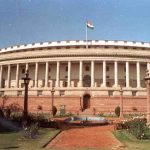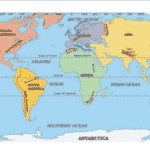Demonetization in India and Background (Read in Hindi)
- The Government of India on 8 November 2016 enacted a policy of demonetization of ₹500 and ₹1000 banknotes.
- On 8 November 2016, the Prime Minister of India in an unscheduled announcement declared circulation of all ₹500 and ₹1000 banknotes of the Mahatma Gandhi Series as invalid effective from the midnight of the same day.
- He also announced the issuance of new ₹500 and ₹2000 banknotes of the Mahatma Gandhi New Series in exchange for the old banknotes.
- However, the banknote denominations of ₹100, ₹50, ₹20, ₹10 and ₹5 of the Mahatma Gandhi Series remained legal tender and were unaffected by the policy.
- The supply of notes of all denominations had increased by 40% between 2011 and 2016, the ₹500 and ₹1000 banknotes increased by 76% and 109% respectively during this period owing to forgery. This forged cash was then used to fund terrorist activities against India.
- The government claimed that demonetization was an effort to stop counterfeiting of the current banknotes allegedly used for funding terrorism, as well as a crackdown on black money in the country.
- The move was described as an effort to reduce corruption, the use of drugs, and smuggling.
Aftermath
- People holding old banknotes faced chaotic difficulties for exchanging their notes as scarcity of cash led to endless lines outside banks and ATMs since 9 November.
- Around half the ATMs in the country were non-functional and were running out of cash after a few hours of being functional.
- Several people were reported to have died from standing in queues for hours to exchange their old banknotes. Deaths were also attributed to lack of medical help due to refusal of old banknotes by hospitals.
- In Gujarat, Delhi and many other major cities, sales of gold increased on 9 November, with an increased 20 to 30% premium surging the price as much as ₹45,000 from the ruling price of ₹31,900 per 10 gram.
- Authorities of Sri Jalakanteswarar temple at Vellore discovered cash worth ₹4.4 million from the temple Hundi.
- People having huge black money started converting it to white by making multiple transactions at different bank branches.
- People were also getting rid of large amounts of banned currency by sending people in groups to exchange their money at banks.
- In response, the government announced that it would start marking customers with indelible ink to ensure that the exchange transactions are carried out only once by each person.
- On 17 November, the government reduced the exchange amount to ₹2000 to discourage attempts to convert black money into legitimate money.
- As soon as demonetization was announced, a surge was seen in people booking railways ticket in classes 1A and 2A for the longest distance possible, to get rid of unaccounted cash.
- The use of the demonetised notes had been allowed by the government for the payment of municipal and local body taxes. This led to a huge jump in revenue collections of local authorities by people using the banned ₹500 and ₹1000 notes.
Effect on Economy and Different Sectors
Stock market
- As a combined effect of demonetization and US presidential election, the share market indices dropped to an around six-month low in the week following the announcement.
- By the end of the intraday trading section on 15 November 2016, the BSE SENSEX index was lower by 565 points and the NIFTY 50 index was below 8100 intraday.
Banking
- In the first four days after the announcement of the step, about 3 trillion rupees in the form of old ₹500 and ₹1000 banknotes had been deposited in the banking system.
- About 500 billion rupees had been dispensed via withdrawals from bank accounts, ATMs as well as exchanges over the bank counters.
- Within these four days, the banking system has handled about 180 million transactions.
- In Malda, a district believed to be a transit point for fake Indian currencies, a large sum of cash deposits in dormant accounts were also reported.
- Post complete exchange of currencies, banks should benefit from higher deposits and transaction volumes, lower cash handling costs and greater acceptance of digital channels.
- While the Nifty closed 1.31% down, Bank Nifty closed higher by 0.09% giving a confirmation of the same.
- This is structurally positive for banks, as part of this cash gets deposited as current account and savings account (CASA) deposits, reducing banks dependence on higher cost borrowing.
- Payment banks and others entities which are part of the transaction ecosystem are likely to be long-term beneficiaries, as more and more cash finds its way into the formal banking channels.
Black Money
- Black money stored in the form of ₹500 and ₹1000 notes will be taken out of our system. It will uncover up to ₹4.6 lakh crore in black money.
Terror Funding and Illegal Activities
- Fake Indian Currency Notes (FICN) network will be dismantled by the demonetization measures.
- Taking out 500 and 1000 rupee notes out of circulation will cease terror funding activities in Jammu and Kashmir, North-eastern states and Naxal-hit states.
- On 10 November the police arrested a petrol pump owner at Ranchi when he reportedly tried to deposit ₹2.5 billion, belonging to a person affiliated with the banned Communist Party of India.
- More than 300 Naxals have surrendered to the police voluntarily due to a shortage of funds.
Real Estate
- Black money was responsible for a sharp appreciation of properties in metros; real estate prices may now see a sharp drop.
- Real estate demand from end users is unlikely to be impacted since a majority of them are backed by funding from bank loans.
- Demand from investors for real estate, however, may come down since in some cases, investors prefer cash transactions.
- The number of buyers will come down and low demand will bring about lower prices in the short term. It will subsequently help in improving the sector’s prospects.
Political Parties
- With nearly five state elections in 2017, demonetization has stunned political parties.
Elections and political parties are major sources of black money. In large states like Punjab and Uttar Pradesh, cash donations are a huge part of “election management”. - Most of the funding of political parties is in cash and sources of more than 90% of such funds are never disclosed.
- An assembly seat candidate spent on an average ₹4-5 Crores on campaigning that is likely to go down drastically.
Effect on GDP: Downward Bias to GDP Growth
- India risks its position of being the fastest growing largest economy: reduced consumption, income, investment etc. may reduce India’s GDP growth as the liquidity impact itself may last 3-4 months.
- The sudden decline in money supply and a simultaneous increase in bank deposits is going to adversely impact consumption demand in the economy in the short term.
This, coupled with the adverse impact on real estate and informal sectors may lead to lowering of GDP growth.
Digital Payment
- With cash transactions facing a reduction, alternative forms of payment will see a surge in demand.
- Digital transaction systems, E-wallets and apps, E-banking, Plastic money, etc. will definitely see substantial increases in demand. This should eventually lead to a strengthening of such systems and the infrastructures required.
- The demand for point of sales (POS) or card swipe machines has increased.
- Debit card transactions rose by 108% and credit card transactions by 60% on 9 November 2016.
Other Impacts
- Nitin Gadkari, the Minister of Transport, subsequently announced a suspension of toll collections on all national highways across India until midnight of 11 November, extending the date to 14 November, 18 November, and 2 December.
- Sales of vehicles in the second-hand market for original equipment manufacturers will get impacted.
- The daily wage earners, other labourers, small traders etc. who reside out of the formal economy uses cash frequently. These sections will lose income in the absence of liquid cash.
- Since Private Educational Institutions, Medical Institutions, Hospitals take huge amounts of donations in Cash which is 40% to 50%, it is expected that this move will impact their receipts.
- Investors in the short term will now believe that cash is not the safest asset and this will shift them from physical asset to financial assets where returns are also higher.
- Trade carried outside bourses, Satta Bazaar & Illegal Betting market may die a natural death as currency gets a new face.
- Income Tax departments raided various illegal tax-evasive businesses in cities that traded with demonetised currency. Large sums of cash were seized in different parts of the country.
Read More: Rs. 500 and Rs. 1000 notes ban: Impacts











